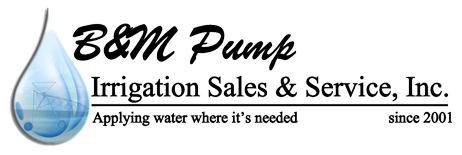How To Track Irrigation Run Time
How To Track Irrigation Run Time
Proper irrigation is essential for maintaining a healthy and lush landscape. However, knowing the optimal irrigation run time can be challenging. Factors like weather conditions, plant types, and soil conditions all play a role in determining how long your irrigation system should run. In this blog post, we will explore some methods and tools to help you track and determine the ideal irrigation run time for your landscaping needs.
1. Use a Timer
One of the simplest ways to track irrigation run time is by using an irrigation timer. This device is typically installed alongside your irrigation system and allows you to set specific run times for different zones or areas in your landscape. You can program the timer based on factors like plant water needs, weather conditions, and soil moisture levels. By using a timer, you can automate your irrigation schedule and ensure that each zone receives the appropriate amount of water.
2. Soil Moisture Sensors
Soil moisture sensors are an excellent tool for tracking irrigation run time accurately. These sensors are placed in the ground and measure the moisture levels in the soil. They provide real-time data to help you determine the irrigation needs of your plants. By monitoring soil moisture levels, you can adjust your irrigation run time based on actual conditions. If the soil moisture sensor indicates that the soil is already adequately moist, you can reduce or skip irrigation, saving water and preventing overwatering.
3. Evapotranspiration (ET) Controllers
Evapotranspiration (ET) controllers are advanced irrigation controllers that use weather data to adjust irrigation schedules. ET is the process by which water is lost from the soil due to evaporation and plant transpiration. ET controllers receive weather data, including temperature, humidity, wind speed, and solar radiation, and use this information to calculate the water requirements of your landscape. By taking into account current weather conditions, these controllers automatically adjust the irrigation run time to provide the appropriate amount of water. ET controllers are highly efficient and can help you optimize water usage while ensuring your plants receive the necessary irrigation.
4. Rain Sensors
Rain sensors are an essential tool for tracking irrigation run time and preventing overwatering during rainy periods. These sensors detect rainfall and temporarily pause your irrigation system when rain is detected. By installing a rain sensor, you can avoid unnecessary watering and save water. Rain sensors can be easily installed alongside your existing irrigation system and provide a cost-effective way to track and adjust your irrigation run time based on current weather conditions.
5. Watering Calendars and Guidelines
Another method to track irrigation run time is by using watering calendars and guidelines. Local gardening organizations or water management authorities often provide watering guidelines based on the specific needs of your region, including recommended run times for different types of plants and soil conditions. Watering calendars take into account climate data, plant water requirements, and soil conditions to help you determine how long and how often to water your landscape. Following these guidelines can help you establish an optimal irrigation run time based on reliable information specific to your area.
6. Conduct a Bucket Test
If you’re looking for a DIY approach to track irrigation run time, you can conduct a bucket test. This method involves placing several buckets or containers within the irrigation zone to catch and measure the water output during a typical irrigation cycle. By measuring the amount of water collected in a specific time frame, you can estimate how long your irrigation system needs to run to deliver the desired amount of water. It’s important to conduct this test on multiple occasions to account for variations in soil conditions, weather, and other factors that may affect water absorption.
Conclusion
Tracking irrigation run time is crucial for maintaining healthy and efficient watering practices in your landscape. By using methods and tools like timers, soil moisture sensors, ET controllers, rain sensors, watering calendars, and conducting a bucket test, you can determine the ideal amount of irrigation for your plants’ needs. Remember to consider factors like weather conditions, plant types, and soil moisture levels when adjusting your irrigation run time. With proper tracking and adjustments, you can optimize water usage, promote plant health, and contribute to sustainable landscaping practices.
Need a hand with tracking the optimal irrigation run time for your landscape? Let us help! Contact us today to learn more about what we can do for you!
Categorised in: Irrigation
